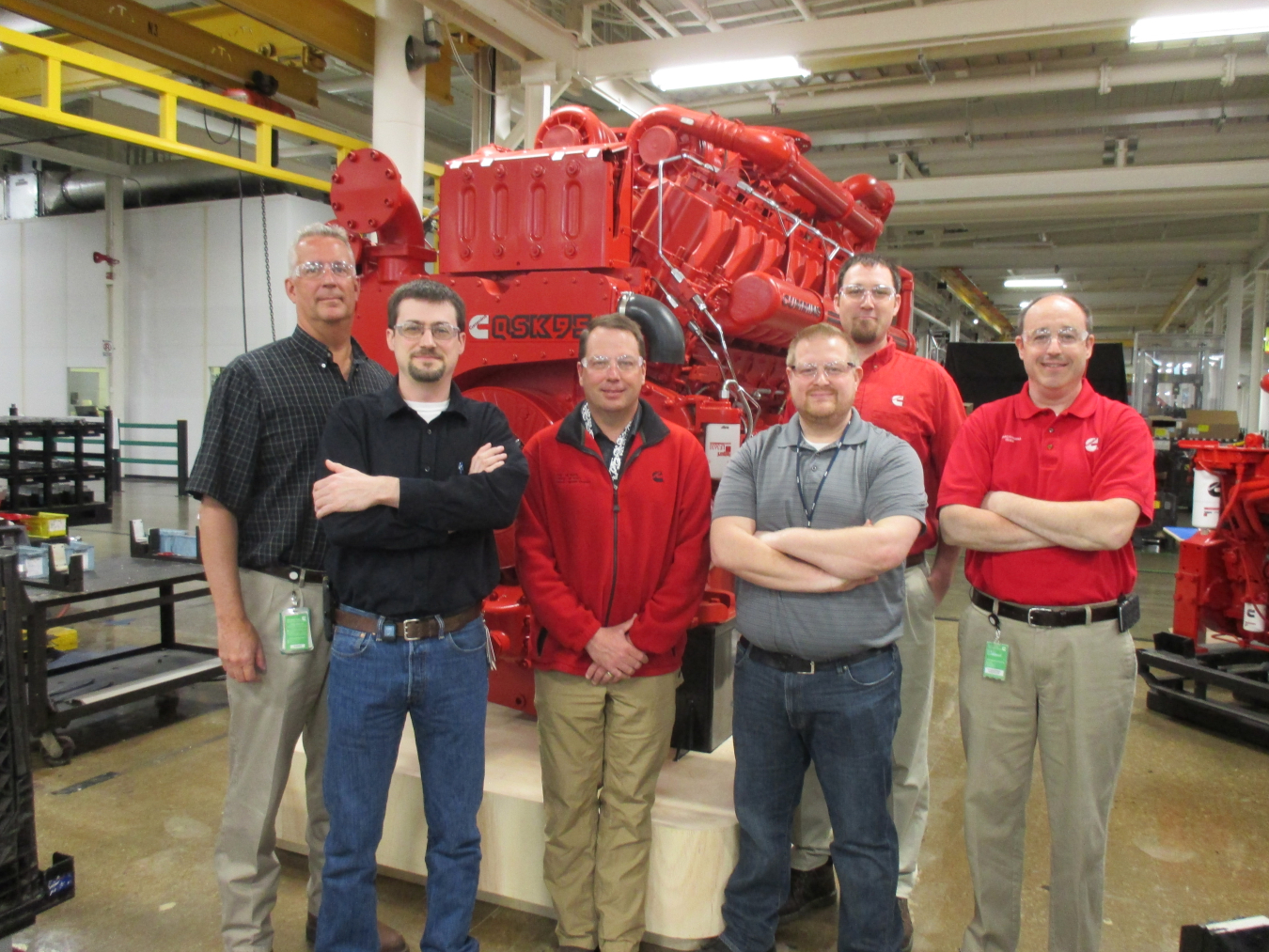Cummins Seymour Engine Plant and Technical Center in Seymour, Indiana, is the latest in a series of Cummins sites to earn certification to...
Advanced Manufacturing & Industrial Decarbonization
April 25, 2018Cummins Seymour Engine Plant and Technical Center in Seymour, Indiana, is the latest in a series of Cummins sites to earn certification to both the global ISO 50001 energy management standard and the Superior Energy Performance™ (SEP) program run by the U.S. Department of Energy (DOE). In the process, Cummins Seymour cut its annual energy expenditures by 15.3% over two years, saving $2.75 million, and put in place a system to continuously build on those savings. These achievements highlight the savings and other ongoing benefits a global corporation can attain by using rigorous energy management systems to pursue ambitious energy goals.

“We believe structured energy management and aggressive goals are key to making progress in global energy efficiency,” said Jennifer Rumsey, Vice President and Chief Technical Officer at Cummins Inc.
Cummins’ long-standing commitment to and achievement of sustainable energy practices has attracted awards and accolades. To further reduce its environmental footprint, the company has set progressively higher goals for wider certification to ISO 50001 and SEP—which will lead to even greater savings. The Seymour site demonstrates both direct energy savings through use of a state-of-the-art energy management system (EnMS) and decreasing costs as additional sites are certified under a single corporate enterprise. Use of the EnMS at Cummins Seymour also turned up some surprising findings: careful energy tracking often reveals hidden energy-intensive processes.
Upon receiving the prestigious Energy Management Leadership Award from the global Clean Energy Ministerial in 2016, Cummins announced plans to have 40 of its manufacturing sites certified to ISO 50001 by 2020—representing 90% of the company’s manufacturing carbon footprint. ISO 50001 provides a framework to help companies manage and continually improve energy performance, reducing costs and emissions year after year. This business-friendly standard embeds best practices into any organization and provides a global benchmark for climate and clean energy action.
Cummins soon augmented this pledge, declaring that it would also seek SEP certification for its 10 manufacturing sites responsible for the highest energy usage. Cummins sees these big energy users as prime sites for SEP which incorporates many low-cost and no-cost measures to deliver significant savings per dollar of investment. SEP certification requires facilities to implement rigorous energy analyses and demonstrate ongoing, third-party verified energy savings from the use of ISO 50001.
Cummins, a Fortune 500 U.S. manufacturer, is a partner in the DOE Better Plants program and has achieved its 25% energy intensity and 40% water intensity reduction goals. In addition, Cummins previously took advantage of SEP’s enterprise-wide approach, implementing ISO 50001 and SEP at three of its U.S. locations to save more than $4 million on annual energy costs. Managers at the Seymour site believe Cummins’ prior ISO 50001 experiences yielded clear benefits:

- Practical tips. A 30-minute phone call to a counterpart at Cummins’ previously ISO/SEP certified Rocky Mount Plant elicited useful insights on use of indicators and the energy analysis model.
- Internal auditor program. Cummins environmental and energy leaders travel to other sites across the enterprise to participate in internal audits and share best practices among Cummins facilities.
- Central resources: Cummins headquarters offers useful training on energy tools, procedures, and management for facility, environment, and manufacturing personnel. An open forum encourages personnel from diverse sites to share challenges, solutions, and impacts of energy management and get SEP/ISO certified.
One surprise turned up by the 50001 process at the Seymour Cummins site was that the facility’s air compressors were oversized for its operations. After changing to a smaller compressor with a variable-speed drive, the Seymour plant realized a 28% savings in compressed air energy costs.
Although already certified to ISO 14001, the Seymour Cummins Energy Team saw an opportunity through the ISO 50001 framework to take a deeper look at the equipment responsible for the bulk of the energy use and the opportunities to improve performance. Energy performance indicators developed under the SEP protocol help the site identify deviations quickly and take appropriate action to correct inefficiencies.
SEP and 50001 Ready program are resources administered by DOE to support U.S. manufacturing, commercial, and institutional facilities in their efforts to increase productivity and reduce energy use through the ISO 50001 standard. Members of the U.S. Council for Energy Efficient Manufacturing, the American National Standards Institute (ANSI), and the ANSI-ASQ National Accreditation Board developed SEP as a transparent system for certifying sustained improvements in energy performance and management practices. Learn more about SEP and 50001 Ready.

